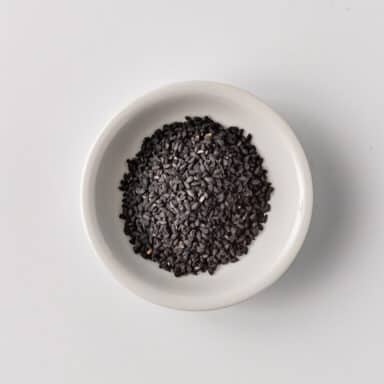Stock these essential Indian spices and pantry staples in your kitchen! making authentic Indian food at home.

When you’re new to cooking Indian food and you find a recipe that you want to make, it can be difficult to find a local source for specialty ingredients. In addition to that, you may not even know what some of those ingredients are, much less how to use them!
If you can relate, this resource is definitely for you! Bookmark this page and refer to it whenever you need information on Indian cooking spices, sauces, condiments, and pantry staples.
How to Convert Whole Spices to Ground Measurements
Allspice: 1 teaspoon allspice berries = 1 teaspoon ground allspice
Black pepper: 1 teaspoon peppercorns = 3/4 teaspoon ground pepper
Cardamom: Approximately 12 pods, dehusked = 1 teaspoon ground cardamom
Cinnamon: One 1 1/2-inch (4-centimeter) stick = 1 teaspoon ground cinnamon powder
Coriander seeds: 1 teaspoon coriander seeds = 3/4 teaspoon ground coriander
Cumin: 1 teaspoon cumin seeds = 1 teaspoons ground cumin
Fennel: 1 teaspoon fennel seeds = 1 teaspoon ground fennel
Mustard seeds: 1 teaspoon mustard seeds = 3/4 tsp ground mustard
Nutmeg: 1/2 nutmeg = 1 teaspoon ground nutmeg
To use ground spice instead of whole spice, the most straightforward conversion is to use about three-quarters as much ground as you would whole. If a recipe calls for a teaspoon of whole coriander, use ¾ teaspoon of ground coriander. There are, of course, factors to take into consideration.
Ball-shaped spices, like round peppercorns or coriander seed, don’t sit neatly in a stack in your measuring spoon. There are pockets of space between them. If you were to break them up, they would take up much less space, hence the idea of ¾ teaspoon ground spice for each teaspoon whole.
Smaller spices, like cumin or caraway, lay much more neatly together in a measuring spoon, so there is less space between the seeds. These spices come closer to a 1:1 ratio.
Source: spiceinc
NOTE: Whenever possible, we also include links to online sources where you can buy the ingredients. Some of them are Amazon affiliate links. This means, there is no difference in your cost to buy them, but we receive a small commission for your purchase. This helps us to keep creating recipes for you to make, so thank you for your support! For more information, see our privacy policy.
Dried vs Canned Beans
Typically if a recipe calls for 1 cup dried chickpeas, which are soaked overnight and cooked, you can easily substitute 2 – 15 ounce cans of chickpeas (garbanzo beans).
Essential Indian Spices and Pantry Staples
Here are the essentials that you’ll find stocked in most authentic Indian restaurants and home kitchens.
(data source: lots of research, taste testing and from a few favorite sites The Curry Guy, Ministry of Curry, Master Indian)
Indian Food Spices and Herbs
Asafoetida – Hing
Dried and powdered tree resin, is an essential spice and is usually one of the first aromatics added to hot ghee or oil.
Its raw, pungent smell mellows into a musky aroma, adding smooth, umami flavors to lentils, beans, and vegetarian curries.

Black Pepper – Kali Mirch
These berries, which grow on climbing vines, are native to southern India. The unripe green berries are harvested when they ripen and turn red and are then dried to what we commonly see in grocery stores.
Black peppercorns, added whole or ground, impart intense aroma, depth, and heat to foods.

Indian Bay Leaf – Tej Patta
Indian bay, which translates to “pungent leaves,” are bay leaves that originate on the southern slopes of the Himalayas. They are used in much the same manner as European bay leaves.
It is included as a whole leaf and usually cooked for the length of the dish, removed just before serving. These olive-green leaves are larger with three veins running through them, and have a milder aroma, similar to that of cinnamon bark and clove, but much more subtle with a leafy flavor of its own.
The Indian Bay Leaf (Teja Patta), comes from the cassia tree and tastes more like cinnamon. I don’t recommend substituting it with the laurel bay leaf in Indian cooking. If Indian Bay Leaf is unavailable, it’s best to leave it out altogether, although you can substitute it with a little cinnamon, or an extra clove.
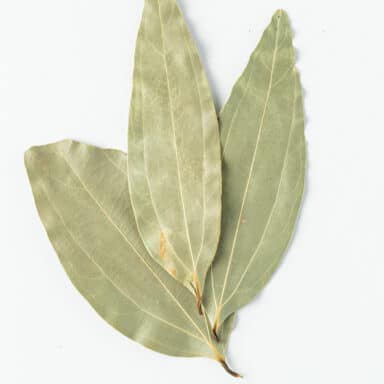
Cardamom (Green) – Hari Elaichi
Elaichi, a sweet and aromatic spice, is a must-have for Indian desserts and is equally critical for curries and pulaos. When using the whole pod, it should be removed before consuming the dish.
And for desserts, discard the outer pod and use a mortar and pestle to grind the seeds into a coarse powder.

Cardamom (Black) – Kali Elaichi
Black cardamom has the aroma of green cardamom, except that the pods are much larger with more seeds. Black cardamom pods are also dried over a fire, and hence are blackened and smoky in flavor.
There is no substitute for the unique fragrance of black cardamom.

Chile (Red) – Red Chili Powder – Lal Mirch (Kashmiri (mild), Jwala most popular), and Bird’s Eye (very hot) and the Bhut Jolokia (Ghost Pepper) is extremely HOT.
Although there are many kinds of dry red chiles used in Indian cuisine, I prefer mild Kashmiri red chile, both whole and ground, which has a brilliant red hue that adds natural food coloring and smoky flavor.
When substituting other chiles for Kashmiri red chiles be mindful of the heat level. If you’re in the U.S. and are unable to find kashmiri powder at an Indian/Asian market, substitute it with an equal amount of smoked paprika, with a bit of cayenne pepper added for spiciness.

Chile (Green) – Hari Mirch
Typically Thai Bird’s Eye or Serrano chiles.

Cinnamon (or Cassia Bark)- Dalchini
Cassia bark is an ingredient you find in most Indian grocery stores. It is a relative of cinnamon, and you can use it in exactly the same way. Cassia bark, with its delicately sweet flavor, is similar to cinnamon sticks.
It adds earthy flavors to meat and curries and is essential in making spice blends. Cassia bark is also used in Indian cooking to add a layer of intensity to tea and hot chocolate.
I have called for easier-to-find cinnamon sticks in the recipes, but if you do purchase cassia bark, it can be substituted.

Cloves – Lavang
If you’ve ever cooked an easter Ham, you know cloves. They’re strong. Add too much, and you will overpower other subtler flavors. These aromatic flower buds are harvested from the evergreen clove tree.
They lend a slightly sweet yet pungent aroma to Indian cuisine. You’ll often find cloves paired with cinnamon and black pepper for a perfect spice blend.
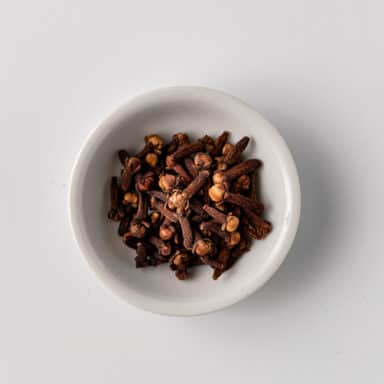
Coriander Seeds – Dhaniya
This versatile spice has a hint of citrus and adds earthy notes to Malabar curry, vindaloo, sambar, and rasam dishes. The whole seeds are lightly toasted and then ground with other spices for several popular spice blends.
Ground coriander is popular because it adds texture to dishes and can be tasted with each bite. Coriander is often paired with cumin for just the right flavors of earthiness.

Cumin – Jeera
Cumin adds nutty, warm flavors and dimension to countless dishes. Whole cumin seeds can be added to tadka, and roasted and ground cumin is great for adding later in the cooking process.
Cumin adds an earthy tone and body to soups, daals, and curries.

Curry Leaves – Kari Potta
They are the leaves of the Murraya koenigii, and – while available as a dried herb – are best used fresh, in the first or second stage of cooking, fried up with onions and your tadka spices, to impart a pungent, nutty aroma, with slight notes of anise and citrus.
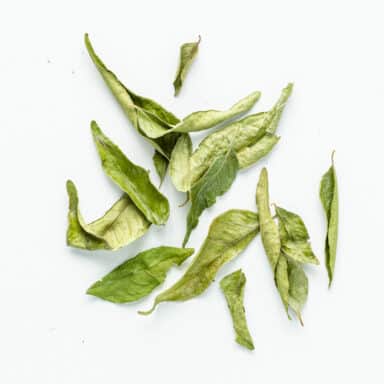
Fenugreek Leaves – Kasuri Methi
Dried fenugreek leaves are good aromatic aids in cooking. Fenugreek has a slightly bitter taste that reminds of curry. These light green leaves will give a heavenly taste and fragrance to Ghormeh Sabzi when sautéed along with garlic and coriander.
Just before adding the leaves to a dish, crush them between the palms of your hands to release the aromatics.

Fenugreek Seeds – Methi Dana
Small mustard- yellow seeds usually dry-roasted or fried in oil or ghee in a tadka to reduce the bitterness.
This bittersweet spice has an undertone of maple syrup and works really well with coriander, cumin, and red chile powder.

Garam Masala
Much like the yellow curry powder we know in the West, garam masala is actually a combination of spices including pepper, cinnamon, nutmeg, cardamom, cumin, coriander, Indian bay, pepper, and some others. Literally translates to “warm spice mix” and it is the quintessential Indian Spice Blend.
It gives warmth and depth to dishes and pairs perfectly with red or green chili for a hearty, aromatic flavor. Every region (and family) across India has its own version. I have my own Garam Masala Spice Blend, give it a try!
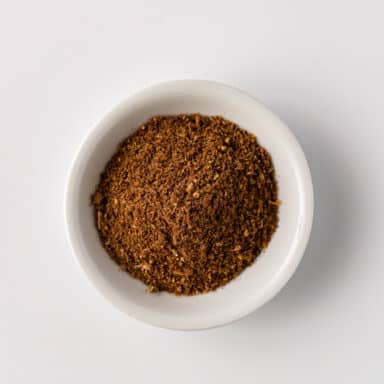
Ginger (fresh) – Adarak
Ginger is the gnarled bumpy root of the ginger plant Zingiber officiale, which belongs to the same family as turmeric and cardamom. The flavor of ginger is characterized by its unique combination of lemon/citrus, slightly peppery and sweet, with a pungent and spicy aroma. It is warming to taste.
Mature ginger root has a tough skin that must be peeled away to get to the fibrous flesh and is usually grated, chopped, or ground for use.
Substitute 1/4 teaspoon dry ground ginger for every 1 teaspoon of freshly grated ginger root.

Ginger (dry ground) – Saunth
Ginger is the gnarled bumpy root of the ginger plant Zingiber officiale, which belongs to the same family as turmeric and cardamom. The flavor of Ginger is characterized by its unique combination of lemon/citrus, slightly peppery and sweet, with a pungent and spicy aroma. It is warming to taste.
Ground ginger (also referred to as powdered ginger) is dried and ground ginger root. Substitute 1/4 teaspoon dry ground ginger for every 1 teaspoon of freshly grated ginger root.

Mango Powder – Amchur
Amchoor or aamchur or amchur, also referred to as mango powder, is a fruity spice powder made from dried unripe green mangoes and is used as a citrusy seasoning.

Mint – Pudina
The leaves (fresh or dried) render a warm, fresh, aromatic, sweet flavor and deliver a cool aftertaste which is used in making tea, beverages, jellies, syrups, ice creams and candies.
Mint flavored tea is quite popular in India and also widely relished in the Arabian and African countries.
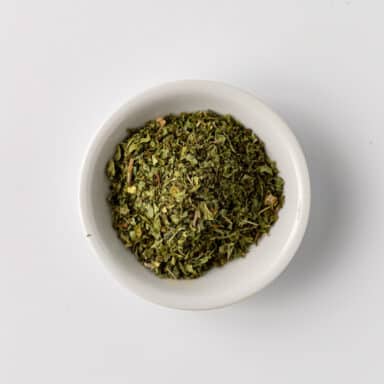
Mustard Seed (Black) – Rai
These pungent, nutty seeds add flavor to many dishes, from curries to chutneys to pickles to salads. Drop them in hot oil and wait for them to crackle and pop to release their flavor.

Mustard Seed (Yellow) – Rai
These pungent, nutty seeds add flavor to many dishes, from curries to chutneys to pickles to salads. Drop them in hot oil and wait for them to crackle and pop to release their flavor.

Nutmeg – Jaiphal
Inner seed of mace/jaipatri, sweet and aromatic nutmeg adds warm notes to sweet dishes. It pairs well with green cardamom and saffron. Whole, grated nutmeg is a common ingredient across India, particularly in the south.
Whole, grated nutmeg is a common ingredient across India, particularly in the south. using it as a whole spice is a completely different experience than using the ground spice, which rapidly loses the strong nutmeg flavor. To use a whole nutmeg, you can use a grinder or shave it with a sharp knife (it crumbles into a coarse powder as you slice it).
The advantage of a freshly grated or shaved nutmeg is that it still contains all those volatile oils and moisture that give it such a distinctive flavor.

Saffron – Kesar
A must-have spice for Indian desserts, saffron, a crimson stigma from the saffron crocus, must be handpicked. Grown in the Kashmir Valley, it takes hundreds of thousands of stigma to produce a pound of saffron, making it the most expensive spice in the world.
Saffron adds an intense aroma, a floral flavor, and a gorgeous golden color to curries, biryanis, and desserts.

Sesame Seeds – Til
Sesame seeds are tiny, cream-colored and shaped like teardrops. They have a mild nutty flavor which is further enhanced when the seeds are roasted. Til seeds have a unique and distinctive smell when used in cooking.
There are 4 varieties: white, black, yellow and red. Black sesame seeds a typically used for making sesame oil.

Star Anise – Chakra Phul
Anise tastes like fennel, but sharper and less floral. Star anise is used in some preparations of Garam Masala. It is a delicious taarka, or frying spice, and is the key seasoning of the incredible tamarind chutney.

Tamarind Paste
The tree produces bean-like pods filled with seeds surrounded by a fibrous pulp. The pulp of the young fruit is green and sour. Tamarind paste tastes very sour, with a somewhat citrusy taste.
It does have notes of smoke and caramel as well, making for a complex flavor profile. It is thick, sticky, and resembles molasses.
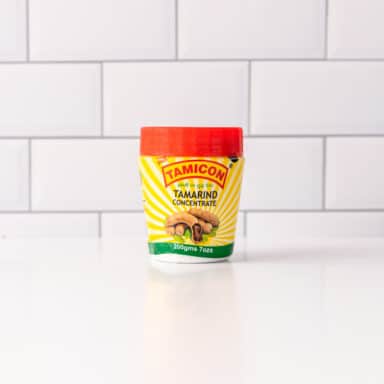
Turmeric – Haldi
Ground turmeric is a bright, healing spice that adds a peppery-woody taste and a deep golden color to curries. It is known for its anti-inflammatory properties.
It has a deep yellow color and is often a saffron substitute for its color, but not its flavor (they taste nothing alike).
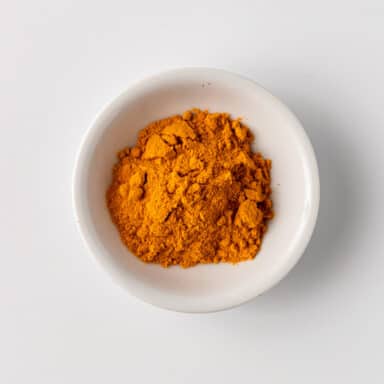
Other Worthy Additions to my Masala Dabba
Ajwain seeds – Carom
These seeds are actually a fruit and also go by the names Ajwan and Ajman, too. Their aroma is that of thyme and their pungent, bitter taste is like a cross between fennel and oregano. A great substitute are caraway seeds.
Though it looks like a seed, it is technically a dried fruit. Each tiny seed has a huge amount of thymol in it, and this gives it a flavor a bit like thyme, but several times stronger. Using carom in breads is common throughout India.

Anise seeds – Saunf
Anise seed is used either ground or whole. Despite its similar name, anise is not related to star anise. Anise is not the same thing as fennel either, although the two do have a similar flavor, and the plants are somewhat similar looking.
Anise and fennel are from the same family of plants (along with caraway, parsley, cilantro, and others), but they are different species. Anise seeds lend a licorice flavor to baked goods.
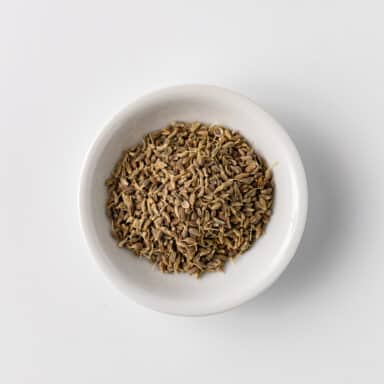
Black Cumin – Shahi Jeera
There are two different spices that can be called “black cumin.” The one I’m talking about is the more common and is similar looking to cumin seeds, but with anise-like flavors, black cumin seeds are milder than regular cumin seeds and are used in making garam masala and rice dishes.
Often confused with nigella seeds or caraway seeds, shah jeera has a smoky, earthy taste. In lieu of shah jeera, regular cumin seeds can be substituted.
The second one is Nigella sativa. (Nigella Seeds – Kalonji.) Nigella sativa looks almost like large pepper seeds, and can be eaten straight from the package or cooked. Originally from South Asia and the Mediterranean, black cumin seeds also in India, Pakistan, and Afghanistan.
Black cumin seeds grow out of an herb that is a member of the parsley family, and they have hints of parsley mixed with fennel in their flavor.

Caraway seeds – Shahjeera
Caraway has a sharp, stimulating aroma and is sometimes confused with fennel or cumin. Its flavor has a nutty, bittersweet sharpness with a hint of citrus and anise.

Fennel – Saunf
Fennel and anise both bear a strong resemblance to black licorice. Fennel is great as a whole spice in taarka, and is another key ingredient in the flavoring of madras and other curries.
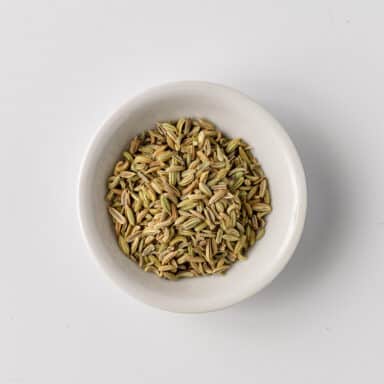
Jaggery – Gur
Jaggery is a coarse, dark, unrefined sugar made from the juice of crushed sugar cane. It has a sweet, caramel flavor. It usually comes in pressed, tall square shapes.
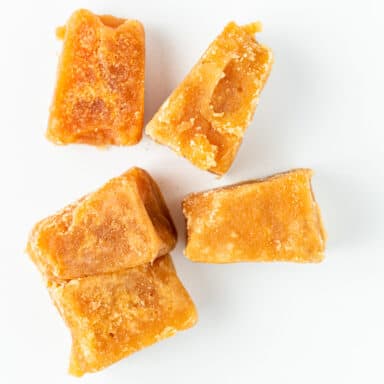
Mace – Javitri
Mace is a webbing or leaf-like spice that wraps the nutmeg seed. Mace has an even more savory, musky flavor than nutmeg, but they are similar enough that their flavors can easily be confused. Typically this is used/ground into a powder.
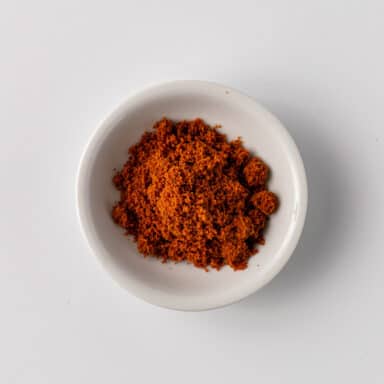
Nigella Seeds – Kalonji
Often times these are called black onion seeds, but are not even from the onion family. There are two different spices that can be called “black cumin.” Nigella sativa looks almost like large pepper seeds, and can be eaten straight from the package or cooked.
Originally from South Asia and the Mediterranean, black cumin seeds also in India, Pakistan, and Afghanistan. Black cumin seeds grow out of an herb that is a member of the parsley family, and they have hints of parsley mixed with fennel in their flavor.
The other is Black Cumin – Shahi Jeera (see above).
